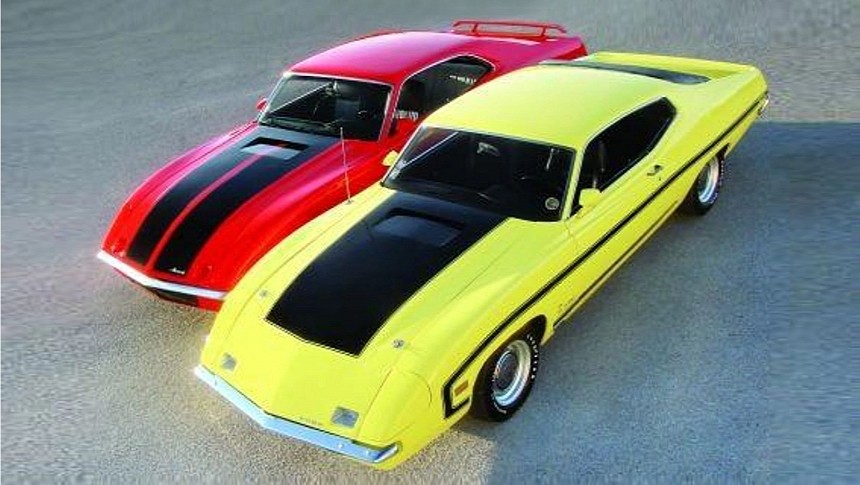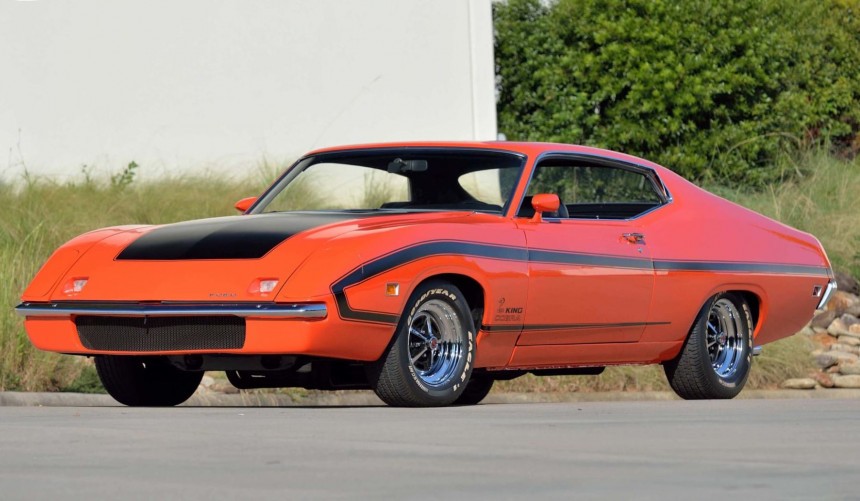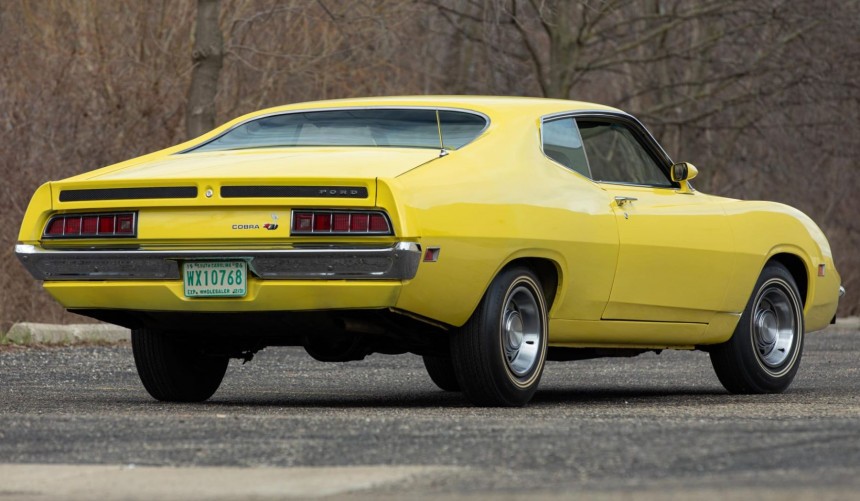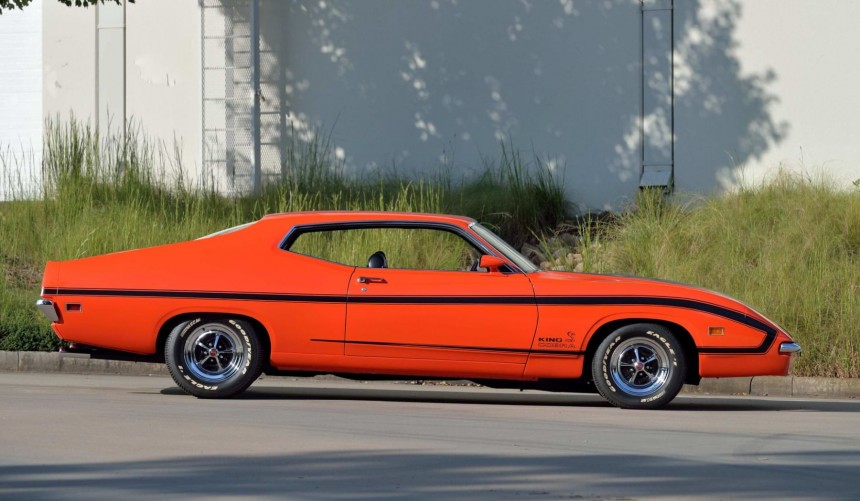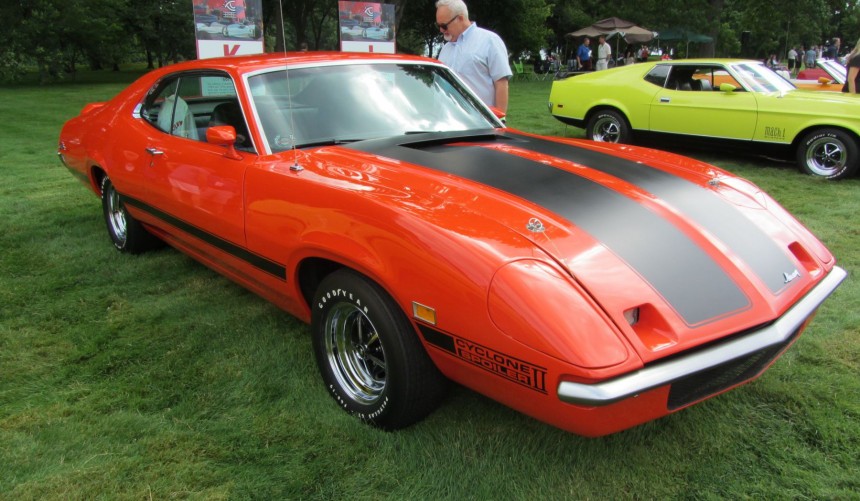Developed to continue the Blue Oval's reign of NASCAR dominance, the Ford Torino King Cobra and Mercury Cyclone Spoiler II homologation specials nearly went into production for the epic 1970 model year.
During the 1960s, the NASCAR Grand National Series saw a fierce battle for dominance between Chrysler (with its Plymouth and Dodge divisions) and Ford (backed up by Mercury).
The introduction of the legendary 426 HEMI V8 tilted the scale in Chrysler's favor, but Ford was hot on its heels.
In 1968, the Blue Oval released a new two-door fastback body for the Grand Torino and Cyclone intermediates. The new body proved aerodynamically efficient, helping the Ford-backed Holman-Moody team clinch the title with David Pearson behind the wheel of a new Torino.
For the following season, the Ford didn't rest on its laurels, and, apart from homologating the new 429 Boss engine for competition by making it available in the Mustang, the company also worked alongside Holman-Moody on further improving the Torino/Cyclone body.
This led to the development of the 1969 Ford Torino Talladega and the original Mercury Cyclone Spoiler II, two models that made it into production (for homologation purposes), donning redesigned front fascias that dramatically improved aerodynamics.
Not only did the new aero design help Ford defend its NASCAR title, but it also helped deliver a lethal blow to the Mopar camp by luring in stock car legend Richard Petty, who got behind the wheel of a Talladega that season.
During the 1969 season, Chrysler answered with the Dodge Charger Daytona. While the outrageous aero car wasn't developed fast enough to pose a real threat to its rivals, it did show a lot of promise in the final six races of the season.
For the 1970 season, the similar Plymouth Superbird was set to join the NASCAR aero wars with Ford in its crosshairs. It proved so good during initial tests that Richard Petty jumped ship again, rejoining Plymouth.
Back in Dearborn, Ford faced a major problem: the Torino/Spoiler models had just received a significant redesign, but during wind tunnel testing, the rear section proved to be aerodynamically inferior to the 1968-1969 version.
Since the slightly sloped front fascia applied on the Talladega and Spoiler II was no longer a viable option, a team of all-star designers led by Larry Shinoda got to work on redesigning the new 1970 body's entire front section.
As with the Talladega, the new Ford aero car dubbed Torino King Cobra was the first to be developed.
Unlike its predecessor or rivals, all of which had aero components grafted to the original bodies, the new car was completely redesigned from the firewall forward.
Therefore, it featured a unique, low-profile sloping hood, fenders with the same radical profile, and a wild front fascia with headlight covers to further reduce drag.
Since homologation requirements for 1970 dictated that a minimum of 3,000 road-legal units had to be sold to the general public, Ford and its partners (including Holman-Moody) developed three to five functional street-legal prototypes in just a few months. Mercury's project started later, so only two prototypes were fully developed.
As Plymouth did with the Superbird, the road-going Torino King Cobra and its Mercury counterpart were to be available with a range of V8s to bolster sales.
The engine lineup was scheduled to include the street version of the Boss 429, which would have made the new aero models FoMoCo's fastest, most potent intermediates.
One Holman-Moody-prepped King Cobra was extensively tested at Daytona with Cale Yarborough behind the wheel.
However, after a few laps around the track, the legendary driver's feedback was all but positive. According to Yarborough, the car lacked downforce toward the front, resulting in serious stability issues at high speeds.
Most speculate that this issue and high production costs led Ford to cancel the project. But, while the production costs were indeed high, the downforce issue was set to be addressed by adding a front spoiler and a large rear wing.
According to insiders like stylist Harvey Winn, who was involved in the project, the real reason why the Blue Oval killed these amazing aero cars had little to do with production costs, revolving around internal politics.
A disagreement between CEO Hank the Deuce (Henry Ford II) and President Semon "Bunkie" Knudsen led to the latter's dismissal. The company then led a purge of all Knudsen's close associates, including Larry Shinoda.
With Shinoda out of the picture and management hellbent on cutting costs, the project stood no chance and was swiftly canceled.
Had the project continued, Ford might have halted Plymouth's march towards the Grand National Series title in 1970.
Furthermore, the epic 1970 model year would have been even more exciting with the addition of the two Boss 429-powered aero cars.
Today, three Ford Torino King Cobra prototypes are known to have survived.
The sole King Cobra equipped with the mighty 429 Boss was sold at a Mecum auction in 2019 for $192,500.
The second, boasting a 429 Cobra Jet is owned by Ford collector Steve Honnell, who purchased it from Holman-Moody in 1970.
The third surviving King Cobra (also a 429 CJ car), known for being the only pristine, unrestored example, was recently under the hammer, with the highest bid reaching $350,000. However, the owner's reserve was not met, so the car didn't switch owners.
The Mercury version, developed under the Cyclone Spoiler II moniker but rumored to have been marketed as Cyclone Super Spoiler, had the model made it into production, was long thought to be a myth.
As it turned out, one of the two prototypes was scrapped, but the second was found in a barn in Indiana by the same Steve Honnell who restored the car and its 429 Boss engine in time for Ford's 100th anniversary.
For more on these surviving legends, we recommend watching the YouTube videos below by Lou Costabile.
.
The introduction of the legendary 426 HEMI V8 tilted the scale in Chrysler's favor, but Ford was hot on its heels.
In 1968, the Blue Oval released a new two-door fastback body for the Grand Torino and Cyclone intermediates. The new body proved aerodynamically efficient, helping the Ford-backed Holman-Moody team clinch the title with David Pearson behind the wheel of a new Torino.
For the following season, the Ford didn't rest on its laurels, and, apart from homologating the new 429 Boss engine for competition by making it available in the Mustang, the company also worked alongside Holman-Moody on further improving the Torino/Cyclone body.
This led to the development of the 1969 Ford Torino Talladega and the original Mercury Cyclone Spoiler II, two models that made it into production (for homologation purposes), donning redesigned front fascias that dramatically improved aerodynamics.
Not only did the new aero design help Ford defend its NASCAR title, but it also helped deliver a lethal blow to the Mopar camp by luring in stock car legend Richard Petty, who got behind the wheel of a Talladega that season.
Taking the Talladega/Spoiler II concept a step forward
For the 1970 season, the similar Plymouth Superbird was set to join the NASCAR aero wars with Ford in its crosshairs. It proved so good during initial tests that Richard Petty jumped ship again, rejoining Plymouth.
Back in Dearborn, Ford faced a major problem: the Torino/Spoiler models had just received a significant redesign, but during wind tunnel testing, the rear section proved to be aerodynamically inferior to the 1968-1969 version.
Since the slightly sloped front fascia applied on the Talladega and Spoiler II was no longer a viable option, a team of all-star designers led by Larry Shinoda got to work on redesigning the new 1970 body's entire front section.
A project that could've led to the fastest street-legal FoMoCo muscle cars
Unlike its predecessor or rivals, all of which had aero components grafted to the original bodies, the new car was completely redesigned from the firewall forward.
Therefore, it featured a unique, low-profile sloping hood, fenders with the same radical profile, and a wild front fascia with headlight covers to further reduce drag.
Since homologation requirements for 1970 dictated that a minimum of 3,000 road-legal units had to be sold to the general public, Ford and its partners (including Holman-Moody) developed three to five functional street-legal prototypes in just a few months. Mercury's project started later, so only two prototypes were fully developed.
As Plymouth did with the Superbird, the road-going Torino King Cobra and its Mercury counterpart were to be available with a range of V8s to bolster sales.
The engine lineup was scheduled to include the street version of the Boss 429, which would have made the new aero models FoMoCo's fastest, most potent intermediates.
Far from perfect and killed off by corporate politics
However, after a few laps around the track, the legendary driver's feedback was all but positive. According to Yarborough, the car lacked downforce toward the front, resulting in serious stability issues at high speeds.
Most speculate that this issue and high production costs led Ford to cancel the project. But, while the production costs were indeed high, the downforce issue was set to be addressed by adding a front spoiler and a large rear wing.
According to insiders like stylist Harvey Winn, who was involved in the project, the real reason why the Blue Oval killed these amazing aero cars had little to do with production costs, revolving around internal politics.
A disagreement between CEO Hank the Deuce (Henry Ford II) and President Semon "Bunkie" Knudsen led to the latter's dismissal. The company then led a purge of all Knudsen's close associates, including Larry Shinoda.
With Shinoda out of the picture and management hellbent on cutting costs, the project stood no chance and was swiftly canceled.
The sole survivors
Furthermore, the epic 1970 model year would have been even more exciting with the addition of the two Boss 429-powered aero cars.
Today, three Ford Torino King Cobra prototypes are known to have survived.
The sole King Cobra equipped with the mighty 429 Boss was sold at a Mecum auction in 2019 for $192,500.
The second, boasting a 429 Cobra Jet is owned by Ford collector Steve Honnell, who purchased it from Holman-Moody in 1970.
The third surviving King Cobra (also a 429 CJ car), known for being the only pristine, unrestored example, was recently under the hammer, with the highest bid reaching $350,000. However, the owner's reserve was not met, so the car didn't switch owners.
The Mercury version, developed under the Cyclone Spoiler II moniker but rumored to have been marketed as Cyclone Super Spoiler, had the model made it into production, was long thought to be a myth.
As it turned out, one of the two prototypes was scrapped, but the second was found in a barn in Indiana by the same Steve Honnell who restored the car and its 429 Boss engine in time for Ford's 100th anniversary.
For more on these surviving legends, we recommend watching the YouTube videos below by Lou Costabile.
.
